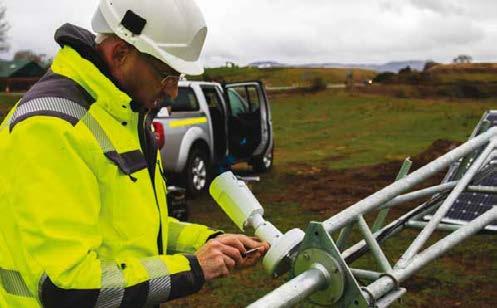SURVEILLANCE
Highways challenge Innovative solution to document highways project using sustainable systems. Camera Control UK utilises Axis surveillance cameras as part of a renewable solution to track the progress of a major highways infrastructure project.
A
major highways infrastructure project is currently underway to upgrade 80 miles of single carriageway between Perth and Inverness in Scotland. Production company, MBP, won a tender to produce a solution that could document the work in progress. MBP, in turn, contacted Camera Control UK to create the surveillance infrastructure and install the technologies to bring the project to life. The brief was to document a 10 mile stretch that was to undergo widening, taking it from a single to dual carriageway, thereby increasing the efficiency of the route and allowing for smoother traffic flow.
22 | August 2020 | IN SECURITY
Initial discussions around how to power the cameras along the route involved the use of many miles of cable, combined with a diesel generator, which, as Martin Naylor, Director of Camera Control UK explains, was not a viable option: “The initial recommendation was to install a diesel generator at a halfway point along this particular stretch of highway, with electrical cables running for 5 miles in either direction. Unlike a straight section of motorway, this route twists and turns, with junctions and even housing in the way. It wasn’t going to be feasible. We had to find a better solution.”
Harnessing renewable energy From a logistics point of view this would prove challenging, while from an environmental perspective, the use of a diesel generator would cause unnecessary pollutants, making it unsuitable for a long-term project. Yet, Martin relished the challenge. After some initial consideration of different options, we realised it had to be an off-grid solution to avoid using local power; a solution that could incorporate wireless communications and utilise renewable energy sources to be environmentally friendly and sustainable over the longer term.” After initial surveys and proposals were agreed, a solution was decided upon which comprised



